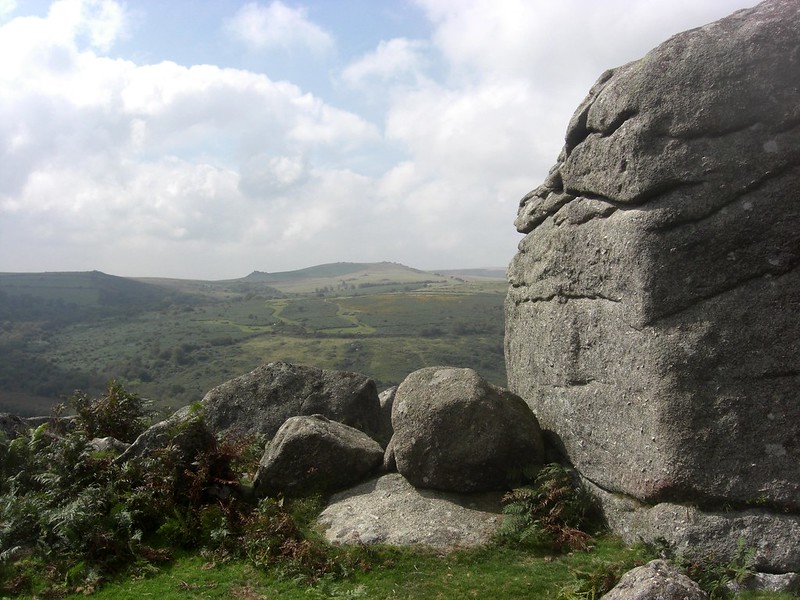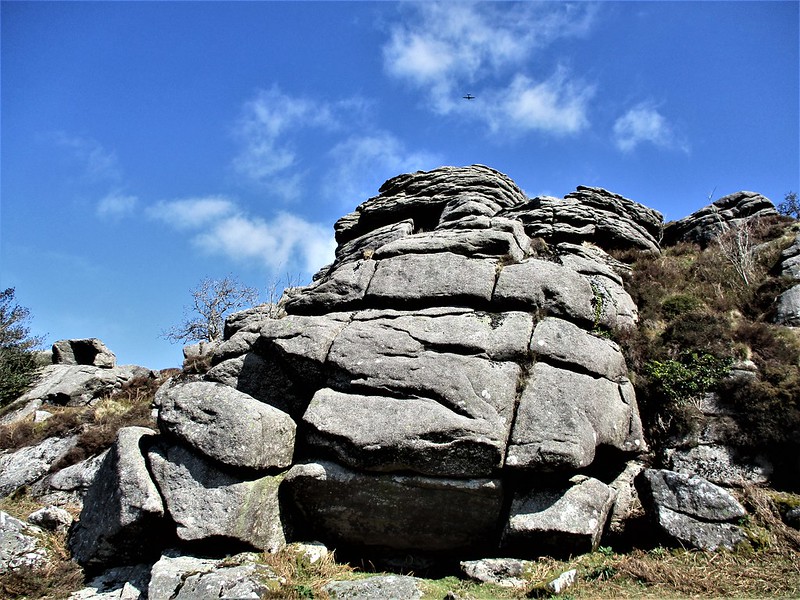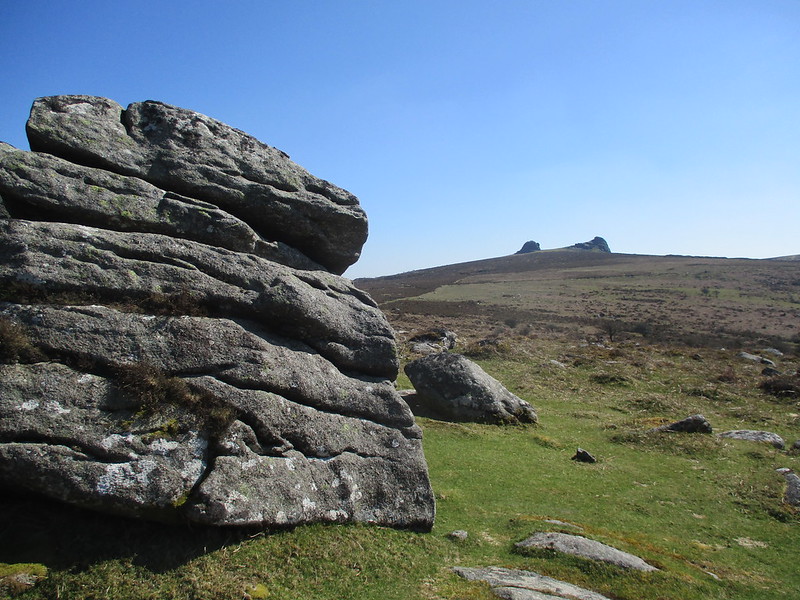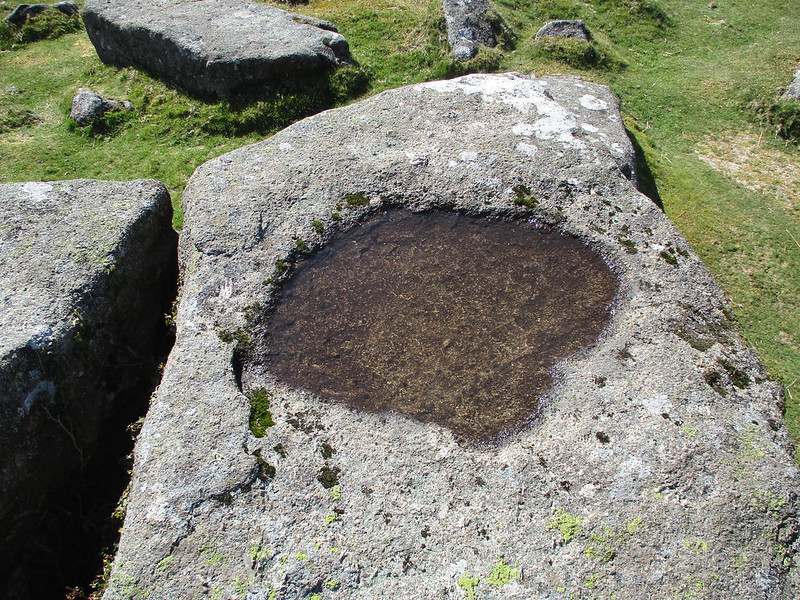TORS OF DARTMOOR
a database of both lesser- & well-known rocks and outcrops
Smallacombe RocksGrea Tor (incorrect siting), Greate Torre
 Of all the tors that line the eastern flank of the beautiful Hound Tor Combe, it is perhaps Smallacombe Rocks that is the most striking for it occupies a large area between Black Hill and Holwell Tor, and casts a huge assortment of granite outcrops and boulders down to the Becka Brook below. The tor has been confused with another in the past and William Crossing (WC) explains in Gems in a Granite Setting (1905) that Grea Tor across the valley was once placed here, an error that despite this explanation continued to be replicated as late as 1973 in a caption to a photograph in a book called Dartmoor by Roy J Westlake. WC's quote is thus; "This pile has sometimes been called Grea Tor, but we believe wrongly so. Grea Tor is situated on the other side of the valley but being spoken of as Grea Tor Rocks the existence of a second pile bearing the name has been supposed. Hence the mistake." We now understand that the name of 'Greate Torre' first appeared in 1566, in a survey of the land of Lord Dynham, possibly where the error originated from.  Interestingly, John Chudleigh (1892, pp.39-40) mentions the tor by its real name: "On Smallacombe Rocks next to Holwell Tor are two Logans, one weighing by admeasurement 50 tons, probably the largest on the Moor which actually rocks." He continues "Visitors to this stone will perhaps be interested in a good echo answering back from the vertical face of Holwell Tor quarry, which from its distance gives a considerable interval for the reply." He has also drawn the logan he describes and shows it in the book as Plate 6 on page 38 as a huge, rounded rock balancing delicately on a pile of boulders.  Smallacombe Rocks are often bagged at the top of the hill, where a large grassy plain creates a sort of amphitheatre, but below all of this the tor spreads over the bracken-infested slopes culminating in several substantial piles, each worthy of a separate identity were they situated elsewhere. The tor is a magnificent ruin that Eric Hemery (EH) describes as having been "flung dramatically about the hillside" and indeed what we have here is a tor of some magnitude.  Shallow rock basins are seen atop some of the higher rocks and EH speaks of "a fine logan-stone below the summit and a fallen rock-basin on the south side of the summit, the topmost rock of which has toppled onto its face, revealing the lip of the basin..." The tor was also home to a small bronze-age settlement as four large hut circles lie on the much flatter eastern side of the summit rocks. All contain impressive outer walls and stand testament to those who once lived on and around Smallacombe Rocks. Views as with other neighbouring rockpiles are magnificent and embrace much of the Becka Brook's upper course as it begins its rapid descent off the high moor, and the unmistakable Hound Tor and its medieval village are to be espied across the Combe.
| ||||||||||||||||||||||||||||